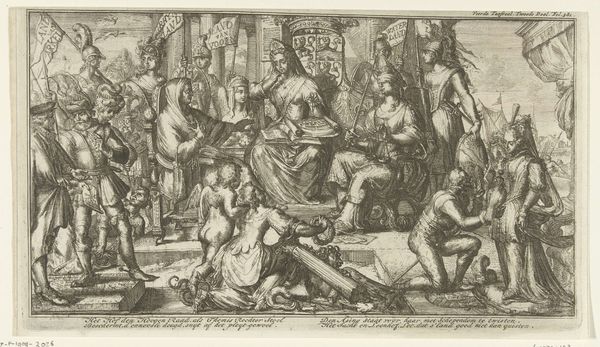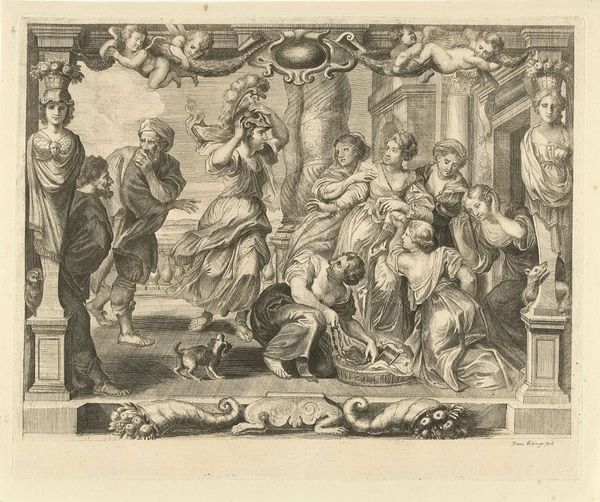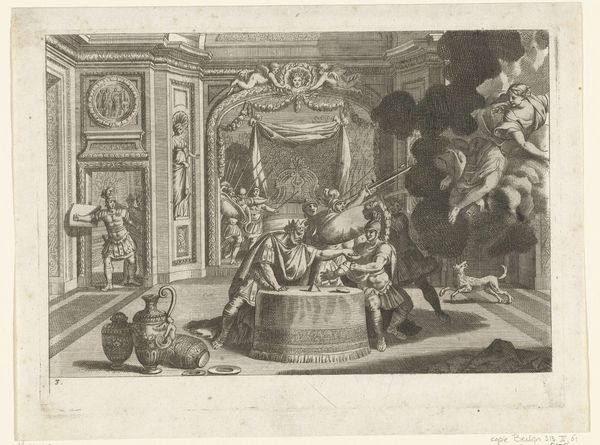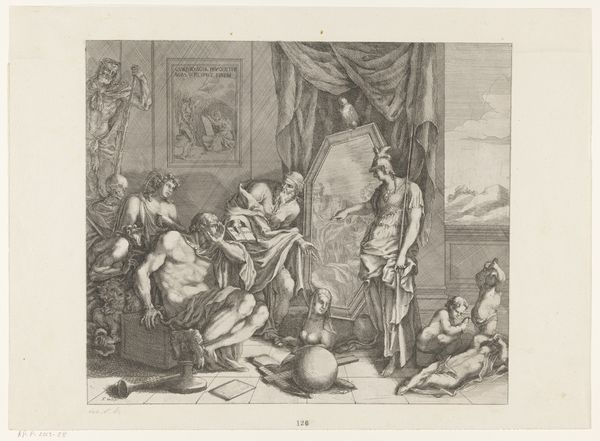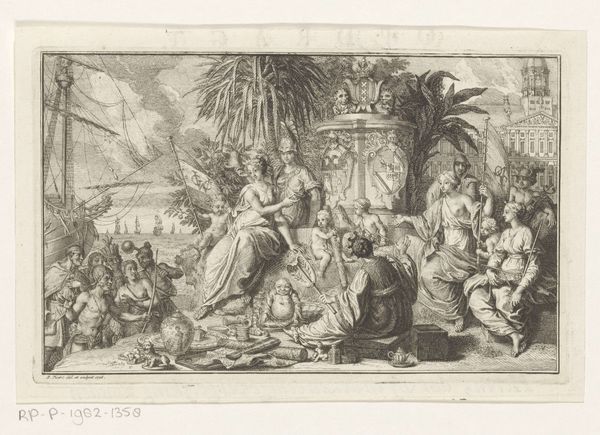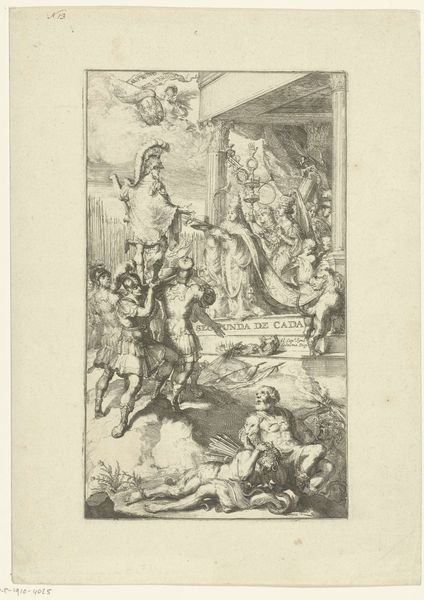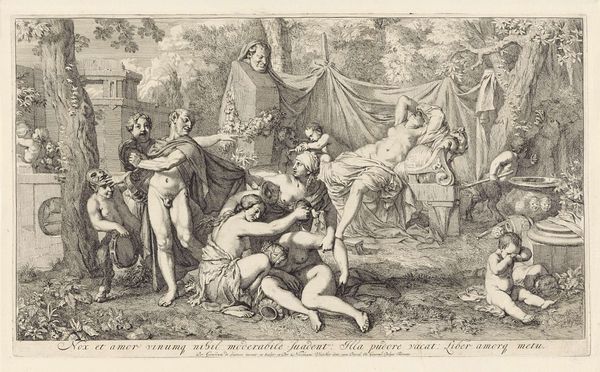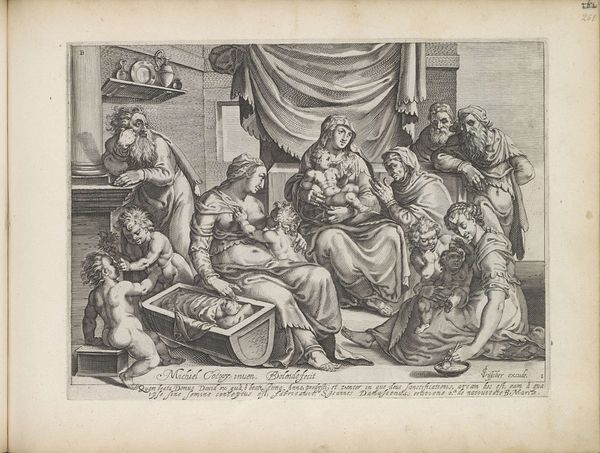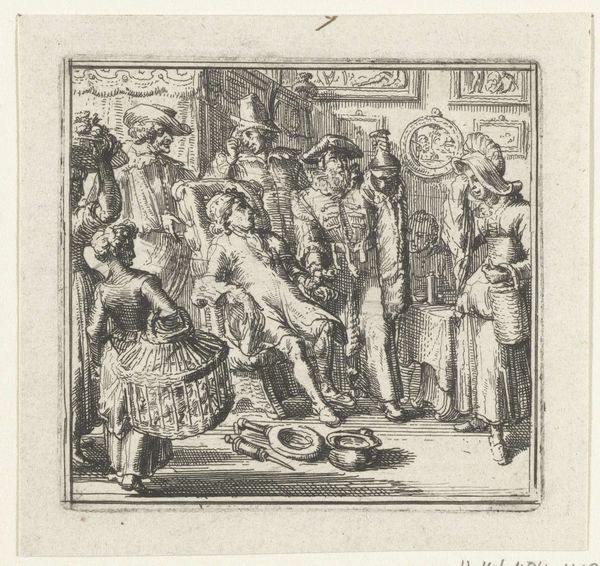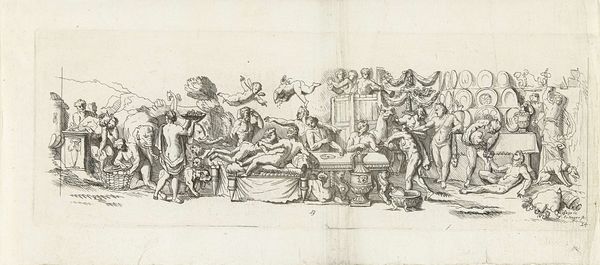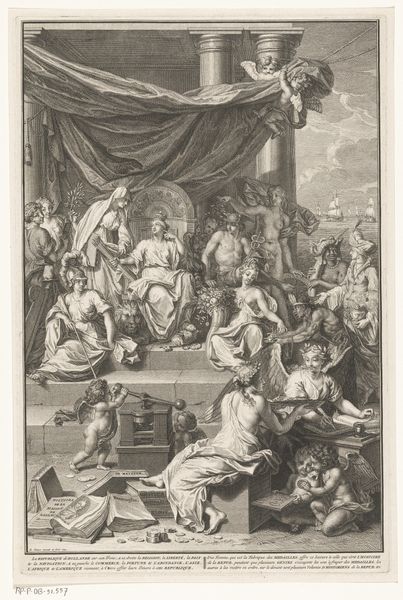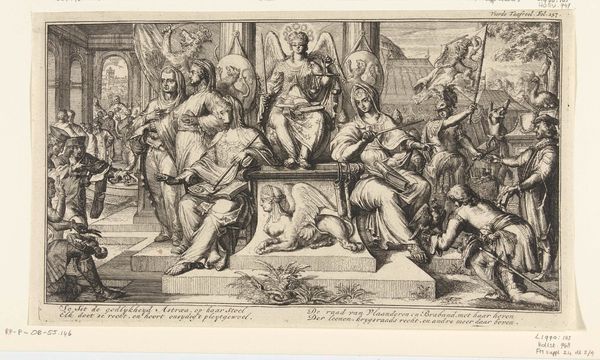
drawing, engraving
#
drawing
#
toned paper
#
light pencil work
#
narrative-art
#
baroque
#
pen drawing
#
pen sketch
#
pencil sketch
#
charcoal drawing
#
figuration
#
charcoal art
#
pen-ink sketch
#
line
#
pen work
#
history-painting
#
engraving
#
pencil art
Dimensions: height 230 mm, width 347 mm
Copyright: Rijks Museum: Open Domain
Editor: Here we have Romeyn de Hooghe’s "De kerk en hoogmoed stoken onrust" from 1674, a drawing held here at the Rijksmuseum. The sheer density of figures is what strikes me first – it feels chaotic, like a snapshot of societal upheaval. What do you make of this tumultuous scene? Curator: Indeed. Notice how de Hooghe uses specific symbols to tell his story. The church, representing established power, is paired with "hoogmoed" or hubris. Where do you see this hubris manifesting? Editor: I think the figures on the right, destroying a globe, represent worldly dominance being overthrown. Curator: Precisely! The globe shattered speaks to the crumbling of empires and established order. Look closely at the figure being handed documents or agreements. How might this small vignette reflect larger social anxieties of the period? Editor: Possibly anxieties related to political or religious conflict. The "church" is implicated, so perhaps religious tension of some kind? Curator: Exactly. It reveals a cultural memory, that pride inevitably leads to unrest. It served as a warning. Editor: It’s fascinating to see how symbols, even from so long ago, can still communicate such potent ideas about power and societal fault lines. Curator: And it shows how consistent these struggles are throughout human history. We’re constantly wrestling with similar themes, aren’t we?
Comments
No comments
Be the first to comment and join the conversation on the ultimate creative platform.
